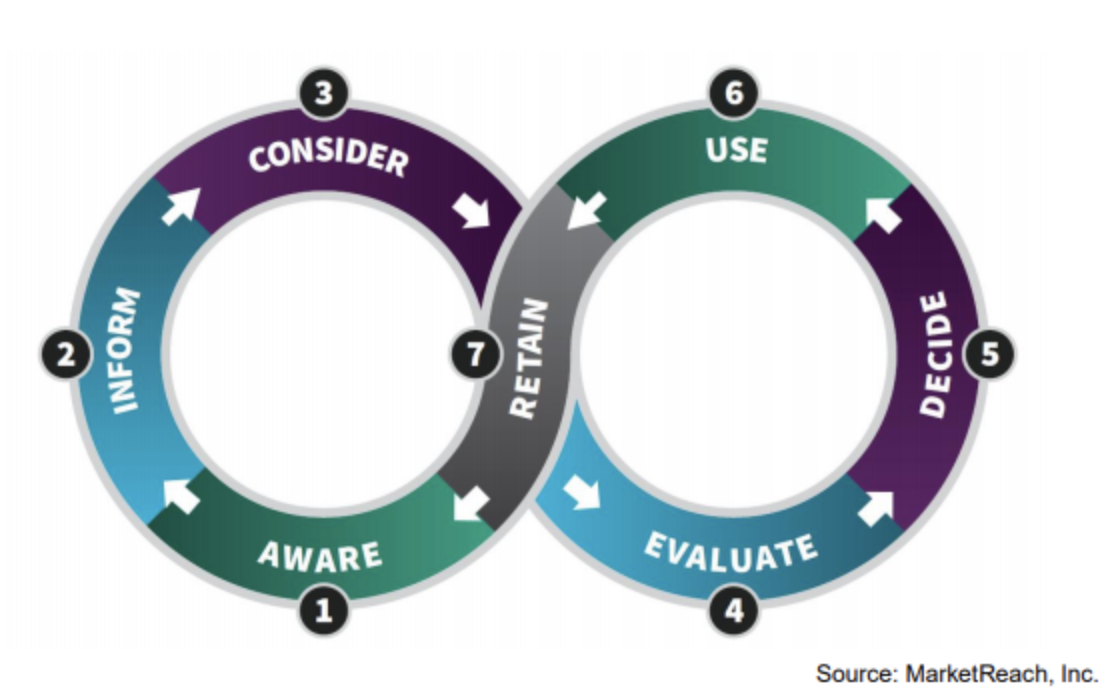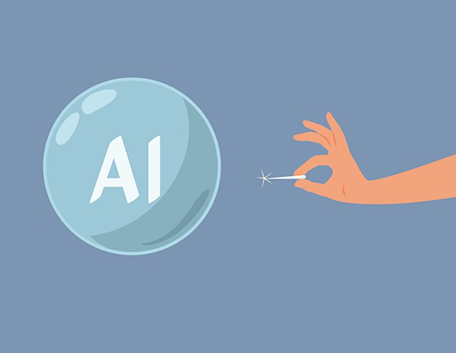What your product is worth – its value – and what you realize through pricing can vary wildly. Closing that gap and selling based on value requires several tools and skills as the customer goes through their buying journey. For the March 2021 BPMA Product Executive Forum (PEF), the group tackled these issues sharing tactics that work and those that fall short.
Customer Journey
A customer’s journey can be represented as an infinite loop (as in the diagram below). In order to ensure the success of the product, it is important to invest into creating the assets that showcase the value of the product to the user. These are crucial in closing the sale, and should be made available and accurate for all the buyers at each step of their buying journey.

The Right Tool For The Job
As customers inch towards making a purchase decision (Step 5), there are specific steps where Product Management and Product Marketing can have greater influence than others. The goal is to provide salespeople with the tools (and training) to accelerate the customer through their buying journey. As is often the case with B2B sales, the purchase decision is more complex with many types of buyers and influencers. Therefore, it is important to create the artifacts needed for each buyer persona at each step of the process. The key steps where Product Management and Product Marketing have the most influence are Steps 2 and 4.
Step 2: Inform
Let’s look at what happens when the buyer is at Step #2 - the Inform Step. This is the opportunity, once the potential buyer is aware of your offering, to educate them. Typical tools used include customer success stories, and case studies, customer testimonials and success videos, infographics, web resources, tutorial and explainer videos, etc. Often, buyers are represented by members of different business units, and leveraging different types of collateral helps communicate the value of the product so that it meets each of those users’ expectations.
For example, GE Healthcare has an advanced, wireless solution for monitoring the hearts of patients in a hospital that need to ambulate (walk around). The FCC, to ensure that iPhones and laptops don’t interfere with this signal, set aside a specific set of frequency bands that are only for the use of hospital telemetry. GE created a brochure to help educate the clinical and business buyer of the benefits of the solution. Separately, for the IT and wireless specialists, GE created a whitepaper and customer presentations that dug deep into the underlying frequency-hopping technology to both avoid interference and provide the business advantage of supporting hundreds of patients simultaneously. Translating a ‘nerdy’ technology into business outcomes is one of the reasons this solution had success.
Step 4: Evaluate
In the Evaluation phase (step #4), the potential customer is more serious about a purchase decision. The buyer wants more information, demonstrations, and in case where possible, the ability to experience, first-hand, the product or service. They want to feel comfortable that they are making the right decision. Minimizing the risk of making the wrong choice now becomes an important part of the decision process. Tools such as product benchmark results reports, interactive product demonstrations, tours or online interactive product demos, trial usage programs and/or on-site product tests are some of the examples of tools product teams can develop to instil a level of confidence in the buyer.
For example, many products give users an opportunity to sign up for a trial (Adobe), or register for a free version of the product with an entry-level set of features (Spotify) to get the potential buyer hooked. Physical goods, many times are offered with free in-store samples, shipped-to-home-samples, or in the case of an appliance or car/truck/SUV the ability to see, touch, or use in-store.
Planning, Investment and Commitment
The PEF discussed where Proving Value falls short. In many cases it’s the overall effort and investment to ensure the right tools are available for each stage of the Customer Journey. For example, customer testimonials can take months or a year or more to secure and develop with quantitative data. ROI and TCO calculators can suffer from poor modeling and overzealous assumptions. Nonetheless, they are critical to selling, especially as the complexity of products and solution (product + services) continues an upward curve.
This post was jointly written by Scott Sbihli, member of the BPMA Executive Board and Vice President of Product Management at HealthEdge, and Milica Golubovic.







